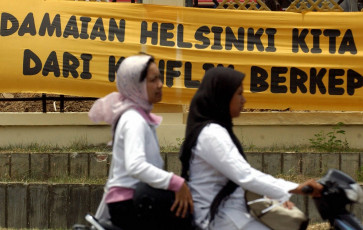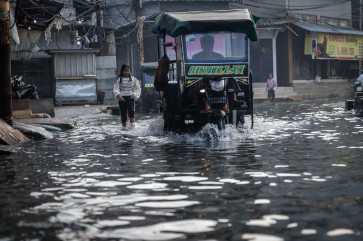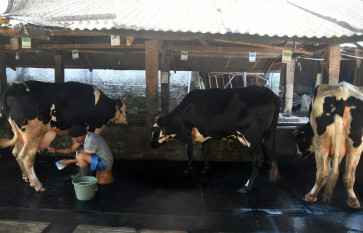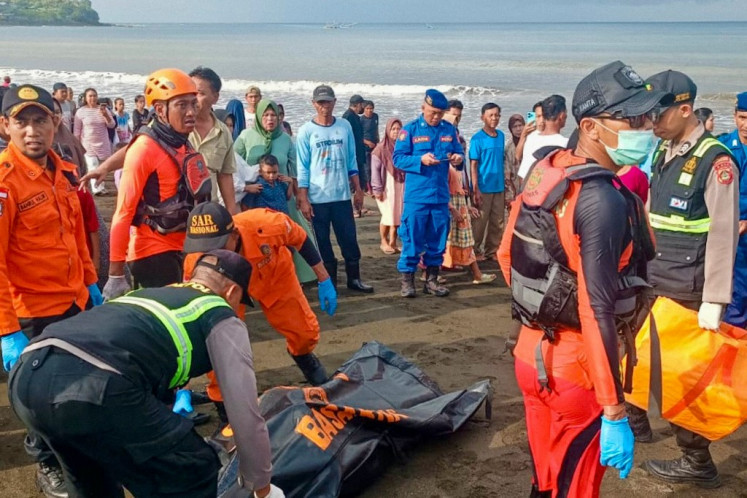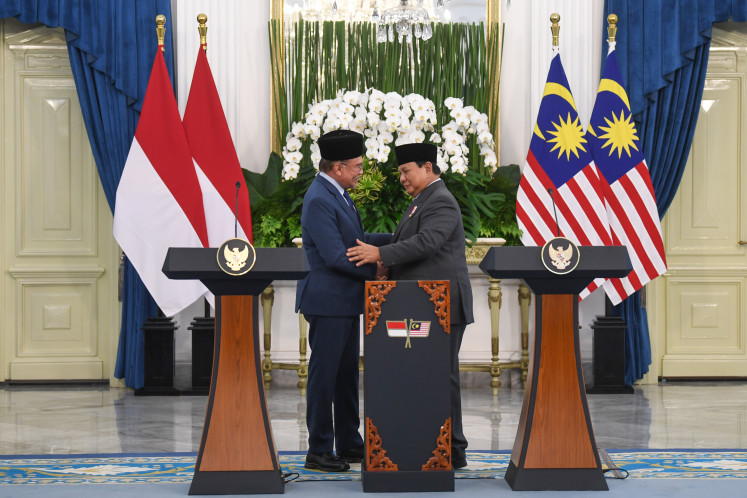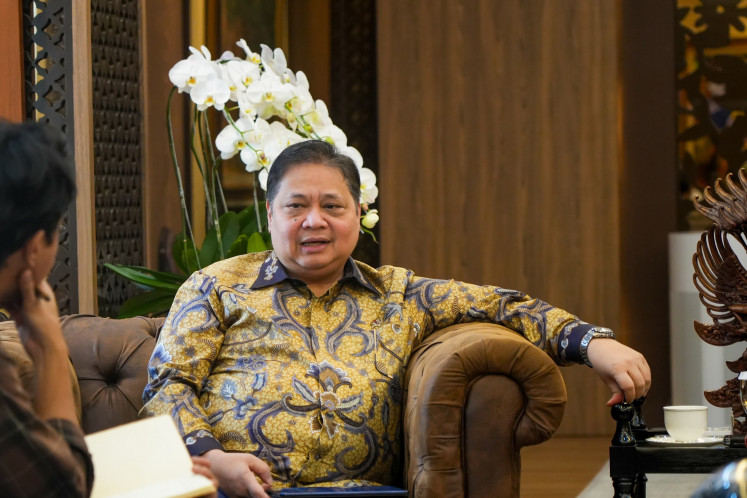Popular Reads
Top Results
Can't find what you're looking for?
View all search resultsPopular Reads
Top Results
Can't find what you're looking for?
View all search resultsThe world map through post-colonial eyes: Indonesia (Part 1 of 2)
When, in 2005, I received the exciting news about my transfer from Berlin as Dutch ambassador to Jakarta, the first thing I did was to go to the well-known Berlin bookshop of Dussmann in the Friedrichstrasse to look for travel guides about Indonesia
Change text size
Gift Premium Articles
to Anyone

W
hen, in 2005, I received the exciting news about my transfer from Berlin as Dutch ambassador to Jakarta, the first thing I did was to go to the well-known Berlin bookshop of Dussmann in the Friedrichstrasse to look for travel guides about Indonesia.
Contrary to what I had expected, I could not find any book on Indonesia in the section dealing with Asia and Southeast Asia. I kept searching and to my surprise finally found what I had been looking for in the section on Oceania and the Pacific.
Only then did I fully realize that Indonesia actually covers two continents, of which the borderline runs through the deep waterway between Bali and Lombok, where the so-called “Wallace Line” is located. To the east of this line we can find kangaroos and other marsupials, just like in Australia, but not to the western side of it.
The reason is clear: When sea levels were much lower in the past, these very special animals could not cross the sea because it remained too deep for them. As a result, quite divergent developments took place on both sides, also in the field of flora. These deep straits did not, however, prevent human beings and their cultures from migrating all over the area that is today called the Indonesian Archipelago.
Generally it can be said that the geographic boundaries of Indonesia with its huge territory and extraordinarily rich diversity, have not been determined by ethnicity, culture, religion, language, nor its belonging to one or more continents, but rather by its Dutch colonial history. The Dutch colonial boundaries in the end became the political boundaries of the Republic of Indonesia.
Not one inch more and not one inch less. I do not want to say that there is any merit in the Dutch contribution to the unity of Indonesia. It is just a result of colonial history, which did not follow any logical ethnic or other boundaries. The Dutch just tried to get control of a large area to serve their own interests, both strategic and economic.
Many people argue that present day Indonesia experienced 350 years of Dutch colonialism. This is true, although it is not valid for the whole territory of Indonesia. Some areas had only been fully colonized since the early 20th century, which in some cases means that full colonial occupation lasted some 35 instead of 350 years.
In the early 17th century the Dutch occupied small parts of what today is Indonesia, with the main purpose of lucrative trade in, for instance, spices like nutmeg, which were found in the remote Banda Islands. This spice trade, conducted by the United East Indies Company (Vereenigde Oostindische Compagnie — VOC), was the beginning of a development that finally led to that huge colonial empire, called the Dutch East Indies or Nederlands Indië, which stretched over an area of over 5,300 kilometers (which is similar to the distance from Bremen, in Germany, to the western borders of China).
The northern region of Aceh was one of the areas occupied by the Dutch in the beginning of the 20th century, after a bloody war of some 30 years. Had Aceh not been occupied and incorporated into the Dutch East Indies, it might now have been a separate Sultanate, like for instance Brunei, not part of the Republic of Indonesia. The same applies to the Batak region in Northern Sumatra, as well as to Bali, which were equally only incorporated in the early 20th century.
In the absence of Dutch domination in Northern Sumatra in the late 19th century, the German Lutheran Church had the chance to convert many Batak people there and to establish the Batak Christian Protestant Church.
Similarly, German protestant missionaries introduced Christianity to Papua in 1855. Later on, with the expansion of Dutch colonialism in Papua, it was agreed between Christian missionaries that Papua was to be divided into a Catholic and Protestant zone of influence.
Just imagine how pragmatic the missionaries were at the time, by deciding that the northern part of West Papua was to be Protestant and the southern part Catholic! I am sure that in Europe such things did not go that smoothly.
The writer was Ambassador of the Netherlands to Indonesia, Germany, Turkey, Egypt and Iraq. The article is excerpted from a lecture he delivered in German on the occasion of the 112nd celebration of the East Asia Society in Bremen, Germany, recently.

